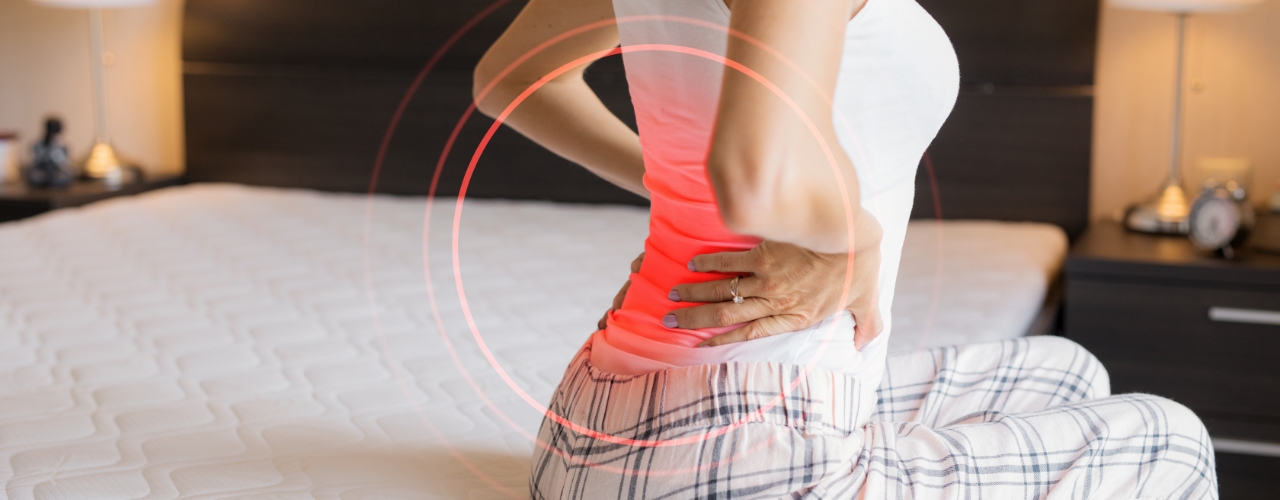A Results-Oriented Approach to Back Pain Relief

Over 80% of adults will experience lower back pain at some point. Are you one of them? At Long Island Physical Therapy, our expert physical therapists will evaluate your exact symptoms and functional impairments to provide you with a treatment plan that works.
Back pain is a wide-ranging problem with a multitude of potential causes, the most common of which are injury, muscle strain, and lifestyle factors. It can profoundly affect your day-to-day life by limiting your mobility, interrupting your sleep, and preventing you from participating in sports and other activities.
The exact experience of lower back pain can vary, ranging from a dull ache to severe pain. Depending on the reason for your back pain, you might notice muscle tension, spasms, and/or stiffness along with the pain.
The physical therapists at Long Island Physical Therapy take a results-oriented approach to back pain. We don’t want to simply alleviate your symptoms; we want to treat your lower back pain at the source so you can live an active, pain-free life. To accomplish this goal, we’ll pull from a variety of research-backed treatment techniques, including the following:
- Therapeutic exercises, such as targeted stretches and strengthening, to get you moving
- Manual therapy, such as therapeutic massage or joint mobilizations, to alleviate muscle tension and improve range of motion
- Education about proper posture and body mechanics to reduce unnecessary stress on your spinal joints
- Pain management modalities, such as cryotherapy or electrical stimulation, to help you tolerate other treatments
We know how disruptive lower back pain can be to your overall quality of life. If you’re eager to get moving again, our evidence-based approach to physical therapy is here to help.

The Many Causes of Lower Back Pain
We know you’re eager to eliminate your back pain and return to your favorite activities. But to fully address your back pain, we first need to address its root cause.
Unfortunately, lower back pain has several potential culprits. When you visit us at Long Island Physical Therapy, our therapists will thoroughly evaluate your symptoms to help us determine what’s causing your pain. From there, we’ll develop a customized program using the latest research and proven treatment techniques.
Here are some of the most common causes of persistent lower back pain:
Muscular Strain
Did you go a little too hard at the gym? Overexertion and improper lifting techniques can strain your back muscles, resulting in pain and limited mobility. Targeted exercises that strengthen and stabilize your lower back can alleviate discomfort and prevent similar injuries in the future.
Bulging and Herniated Discs
When one of the cushiony discs between your vertebrae ruptures or bulges, it can lead to pain and discomfort in your lower back. While herniated discs usually heal on their own, we’ll offer pain management strategies and strengthening exercises to relieve discomfort and restore function.
Degenerative Disc Disease
As you age, your spinal discs can start to wear down, leading to a loss of their shock-absorbing properties–and an increase in lower back pain. We’ll work with you to slow the progression of disc degeneration by improving strength and mobility in your back
Poor Posture
When you slouch or spend too much time sitting, it leads to stress on the spine and surrounding muscles, leading to pain and discomfort. We’ll show you proven techniques for correcting postural impairments and strengthening your core so your spine gets the support it needs.
You don’t have to sit on the sidelines due to lower back pain. Call 631-683-4000 to determine what’s causing your pain and find a solution!
Proven Techniques for Treating Lower Back Pain
Physical therapy takes an evidence-based approach to relieving back pain and restoring optimal function. Our treatment plans are based on the latest research and tailored to suit your needs, goals, and symptoms.
Depending on the cause of your back pain, we might utilize one or more of the following treatment techniques:
- Therapeutic Exercise: Movement is one of the best ways to treat lower back pain, and our expert physical therapists will show you which exercises will most benefit your condition. We’ll help you strengthen the muscles that support your spine, correct muscle imbalances, and improve your spinal mobility–all with the goal of relieving and preventing pain.
- Core Stabilization: Strong core muscles are essential in supporting your spine and maintaining proper posture. We’ll work with you to develop a personalized core-strengthening exercise program to reduce pain and improve posture, balance, and overall functional ability.
- Manual Therapy: Manual therapy consists of several techniques shown to alleviate pain, improve mobility, and restore function. From joint manipulation to soft tissue mobilization, this hands-on approach to treatment addresses muscle tightness and joint stiffness, promoting lasting pain relief.
- Postural Education: Poor posture worsens back pain and can prevent you from achieving the results you’re looking for. Our team of experts will educate you on proper body mechanics, sitting and standing postures, and ergonomic adjustments to improve posture and alleviate stress on the spine.
- Pain Management Modalities: If your pain is too intense for therapeutic exercise, we’ll help prepare your body for treatment using a variety of physical therapy modalities, such as electrical stimulation or hot and cold therapy.
See How Long Island PT in Huntington Station, NY Has Help Provide Back Pain Relief
At Long Island Physical Therapy, we’ll work with you to find the right combination of treatments to get the results you’re looking for–from immediate pain relief to lasting pain prevention.
Request an appointment to learn how we can help you relieve your lower back pain for good!


